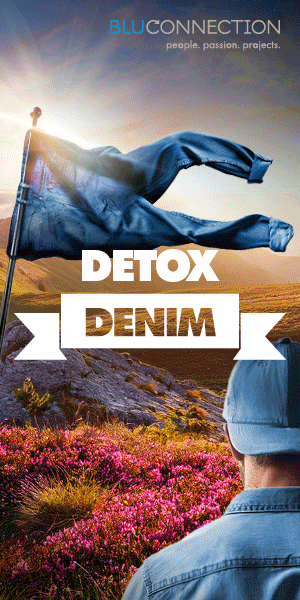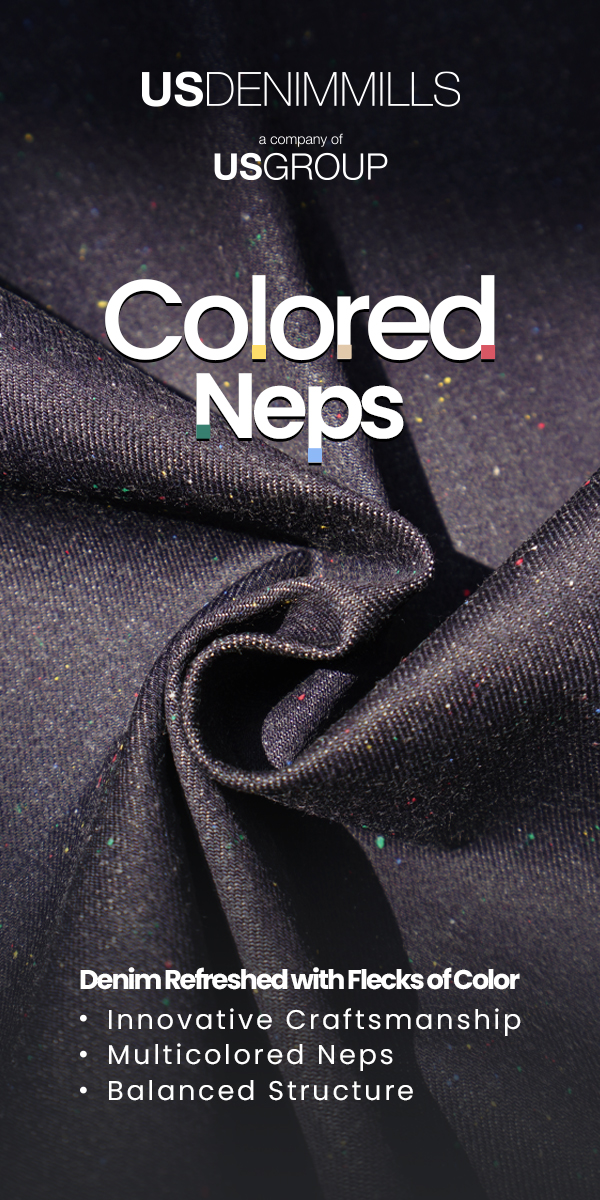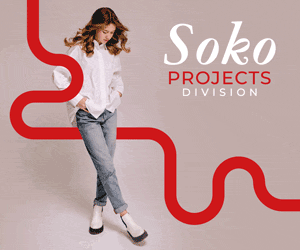Sustainability stripes

Bestseller ponders some of the key threads that together make up the multidimensional tapestry that is its ever-evolving circularity road map.
Danish clothing group Bestseller, home to brands such as Jack & Jones, Vero Moda, Only, JJXX, Name It and Selected, says its mission is “to bring fashion forward”. One of the founders’ sons, Anders Holch Povlsen, now today something of a conservationist, became the company’s chief executive – and sole owner – in 2000, aged 28. (Mr Holch Povlsen also holds significant shares in European fashion e-tailers Asos and Zalando.) Bestseller launched its Fashion FWD sustainability strategy in 2018 and achieved record-level revenues of $5 billion or DKK 35.3 billion for the 12 months ended July 31, 2022, a 33% rise on the year previous. The group is now present in around 70 markets, Germany being its largest.
Turning up the heat
For a business of its size, sustainability is inevitably a multipronged effort. A key focus of Bestseller’s attentions in recent years, however, has been ReSuit (Recycling Technologies and Sustainable Textile Product Design), a three-year, Danish Technological Institute-led national fashion research and development project centred on how parties based in Denmark, and ultimately elsewhere, can design with circularity in mind. This includes working together to improve how polyester fabrics can be recycled chemically, in addition to exploring how hydrothermal liquefaction (HTL), not normally applied to apparel waste, might be looped in, alongside Dansk Shell. Through a combination of water, heat and pressure, HTL can be used to degrade and convert mixed fibres unsuitable for textile-to-textile recycling into bio-oil for fuel, plastics or other synthetic textile fibres. Supported by approximately $1.9 million (DKK 13 million) in investment from Innovation Fund Denmark, the consortium’s other members are Design School Kolding, Aarhus University, research firm Fraunhofer, textile services provider Elis and consumer behaviour organisation Naboskab.
With just over a year to go, ReSuit has already resulted in the publication, last July, of an article in Resources, Conservation and Recycling, titled ‘Hydrothermal liquefaction of post-consumer mixed textile waste for recovery of bio-oil and terephthalic acid’. A second is currently awaiting publication, having now made it past the approval stage, the group tells Inside Denim. As the title of the study suggests, authors Aisha Matayeva and Patrick Biller, both affiliated with Aarhus University, experimented with producing bio-oil and terephthalic acid (TPA) from Elis-supplied, manually sorted and shredded post-consumer textile waste via HTL temperatures of 300, 325 and 350°C. Three different blends of polycotton were tested: 95% polyester (PET) and 5% cotton; 50% PET and 50% cotton; and 5% PET and 95% cotton. Dichloromethane and potassium hydroxide were used as catalysts.
The researchers found that cotton-rich blended textiles attained a maximum bio-oil yield of 26% at 325°C. Oil production from the PET-rich waste, meanwhile, was ‘’insignificant’’, they said, but as much as 91% TPA was recovered. The 50:50 blend of PET and cotton proved the most optimal of the three. Although a final summary of learnings and outcomes gained from ReSuit will not be published until the project concludes in April 2024, Bestseller’s innovation manager, Camilla Skjønning Jørgensen, describes progress so far as proceeding “as planned”, with the quality of insights into chemical recycling and HTL technologies considered “good”. Their findings have already led to two editions of what Bestseller calls its Circular Design Guide, which the company has produced in partnership with Design School Kolding. First released last year, the open-source document was created internally to function as a manual for the group’s many brands. An updated version followed this past February.
Best intentions
The guide emphasises minimum circularity criteria such as 98% mono-material composition, specifically those pre-screened as “better” or “best” by its Fashion FWD team. Notably, certified organic cotton is listed as a “better” fibre, while certified recycled cotton from textile waste ranks higher as “best”. (Fibre grown under the Better Cotton programme, incidentally, is, for now, scored at a level below “better” for purposes of circular design.) Manmade cellulosic fibres or MMCFs like Lenzing’s Ecovero and Tencel-branded lyocell stand out among the “better” cut in their category, beaten only by Birla’s 80% wood pulp and 20% pre-consumer fabric waste-blended Liva Reviva and MMCFs manufactured from recycled textiles.
Importantly, the guide is not set in stone and is never to be signed off as complete, Ms Skjønning Jørgensen cautions. Rather, it is meant to be a flexible, continuously evolving tool that reflects the business’ own understanding as decision-makers “get wiser” over time. Bestseller advises its brands to join hands when placing raw material orders, if supplier minimums would otherwise be too high for them working alone.
That said, the group is still not immune to market upheaval. Last year, for example, Bestseller’s use of organic cotton declined by 10% in a single year, down to 11% versus 21% of the mix in 2021. Senior project specialist at the company, Danique Lodewijks, tells us that “extreme price fluctuations” and “widespread integrity issues around organic cotton” across the world were primarily to blame for this. The group’s Fashion FWD targets include an expectation that each of its brands will dedicate 30% of their entire cotton supply to organic or in-conversion fibres by 2025. After holding up its hands in acknowledgement of 2022’s organic cotton drop-off, Bestseller’s biggest brand, Jack & Jones, made a major announcement regarding its commitment to cotton lint grown under partner direct-to-farm programmes this calendar year. The denim business said that it had upped its order by 340% to over 6,600 tonnes, compared to the roughly 1,500 tonnes it booked ahead of 2022. Significantly, this cotton will support replenishment of the brand’s seasonless Never Out Of Stock (NOOS) lines, which it says account for about half of its total turnover.
Bestseller is involved in multiple direct-to-farm efforts, Ms Lodewijks explains, such as the Organic Cotton Accelerator scheme in India, Cotton made in Africa in Tanzania, the independent projects of Turkish denim mills Çalik and Bossa, not to mention Pakistan-based denim manufacturer Artistic Milliners’ own Milliner Organic programme, which the fashion group has supported since at least 2021. As we reported back in issue nine, Bestseller is believed to have increased its financial contributions to the latter scheme in recent months. Outside of providing funds, the company also has “a lot of ongoing involvement” with direct-to-farm initiatives like Milliner Organic, Ms Lodewijks shares, including monthly progress calls with on-the-ground implementation teams, during which various challenges, updates, expectations, farmer feedback on training and more are all discussed. By scaling up use of direct-to-farm cotton, Bestseller therefore hopes to “avoid altogether” the prohibitive fibre prices and integrity concerns which so affected last year’s sourcing, thereby making them a thing of the past.
Pastures new
As its Circular Design Guide fibre hierarchy would suggest, longer-term sustainable sourcing solutions, for Bestseller, involve increased use – and support – of lower-impact fibres, developed with “new” recycling technologies. While direct-to-farm cotton might be “produced in the best possible way”, in Ms Skjønning Jørgensen’s words, the group is at the same time conscious of its consumption, so remains focused on decoupling its material supply from virgin feedstocks “as much as possible” in the short term. Substantial investment in regenerated fibre technologies such as Ambercycling, said to be able to recycle end-of-life polyester textiles indefinitely, Infinited Fiber Company’s Infinna and Spinnova, a manufacturer of textile fibres from textile, food and leather waste, plus wood pulp, indeed demonstrates the company’s willingness to back up its words and wishes for the future with measurable action steps.
Of course, real circularity is not limited to “better” or “best” fibres alone, or even the availability of viable recycling technologies, as Bestseller well knows. Ms Skjønning Jørgensen underscores this fact by bringing us back to where things will be moving next: “innovative materials must also be designed from a circular economy perspective”.
Denim brand Jack & Jones, Bestseller's most sizeable company, will use 340% more direct-to-farm cotton this year compared to 2022.
All Photos: Bestseller













